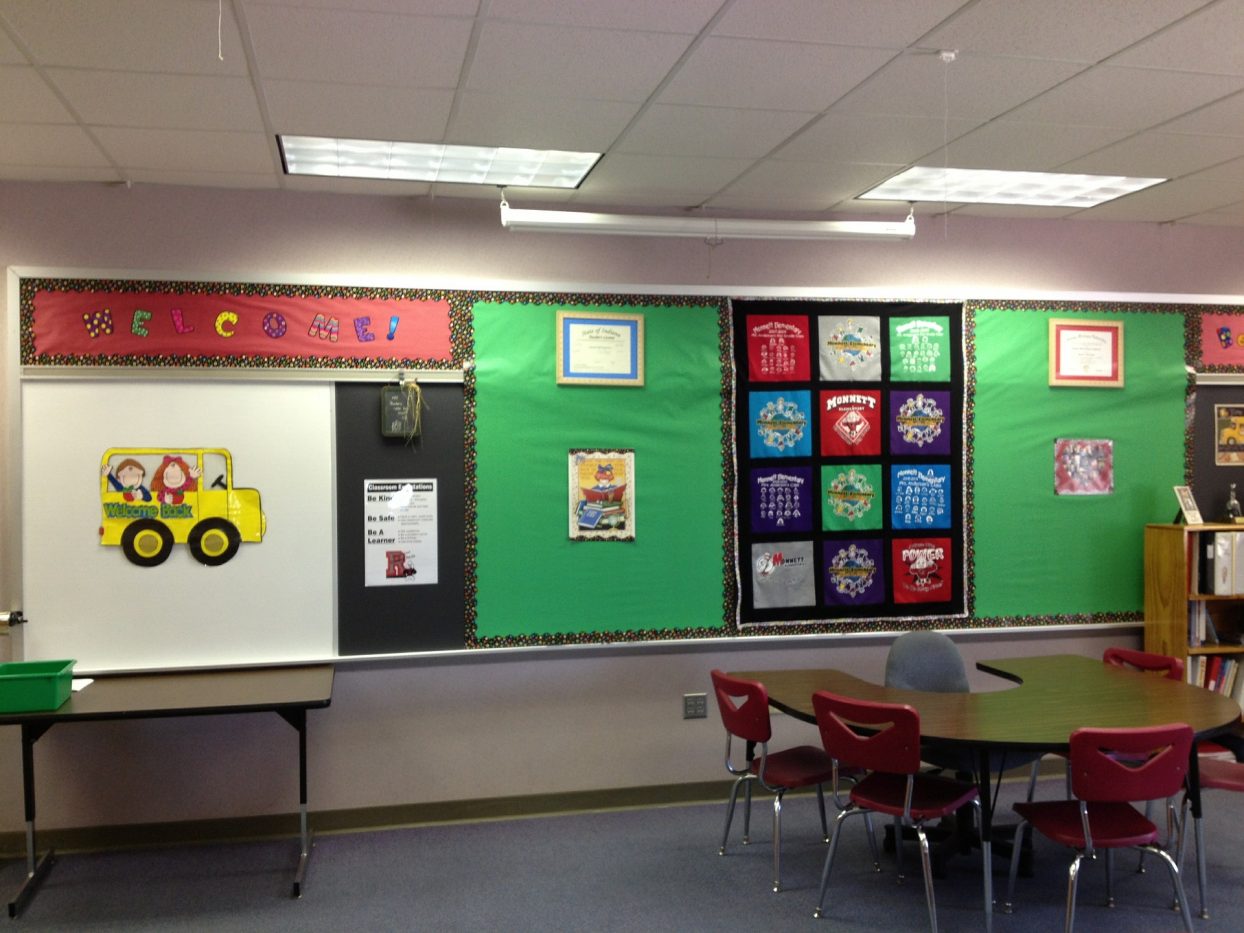25 de julio de 2018
Preschoolers’ Emergent Writing Skills, Phonemic Awareness and Writing instruction
Helping preschoolers to develop communicative skills is a challenge for teachers. Nowadays, students are exposed to new ways to learn and it is necessary to take advantage of their abilities throughout their learning process. However, sometimes the development of writing skills at preschool is not the first desirable learning experience that students perform at their early years. In addition, students can feel that it is easier to write using their first language than their second language. These were reasons why I became interested in learning and researching about strategies that could guide my students to express their ideas using the written code in their second language. Additionally, I intended to make students aware of the different English sounds to make them feel more confident and capable of using letters and sounds effectively.
By Astrid Cepeda
Helping preschoolers to develop communicative skills is a challenge for teachers. Nowadays, students are exposed to new ways to learn and it is necessary to take advantage of their abilities throughout their learning process. However, sometimes the development of writing skills at preschool is not the first desirable learning experience that students perform at their early years. In addition, students can feel that it is easier to write using their first language than their second language. These were reasons why I became interested in learning and researching about strategies that could guide my students to express their ideas using the written code in their second language. Additionally, I intended to make students aware of the different English sounds to make them feel more confident and capable of using letters and sounds effectively.
Emergent writing
In this sense, it is crucial to conceive emergent literacy to “denote the idea that the acquisition of literacy is best conceptualized as a developmental continuum, with its origins early in the life of a child” (Whitehurst & Lonigan, 1998, p. 848). Hence, emergent writing is a concept related to the concrete marks children produce, the significance children assign to them and the comprehension of the way written language operates (Cabell, Tortorelli, & Gerde, 2013). Writing skills at preschool cannot be confused with handwriting or the creation of well-formed letters. It is important to relate them to the meaning of visual signs that children start providing when they are at preschool.
It is also essential to understand the stages that are part of the writing development. Firstly, children begin to represent their ideas by scribbling and drawing. Then, they form and model some letter shapes, after that, they are able to interpret the sounds of spoken language which allows children to discriminate individual sounds to begin to use beginning and final sounds in their writing (Cabell et al., 2013). Finally, when they represent all the sounds their writing becomes more standard. Melgarejo (2011) expressed that “it is necessary to guide children during the process by scaffolding their writing and providing support, so they can build self-confidence and experience writing through the drafting, revising, and editing stages of the process” (p. 72). Under such circumstances, the stages of writing must be considered to teach students how to become aware of their own writing process.
Writing instruction
Since “emergent writing at the preschool age is a dynamic and fluid process” (Dennis & Votteler, 2013, p. 445), teachers have to offer students different kinds of strategies that allow them to use visual signs that at the beginning of the process are represented by scribbling but later become letters that express messages. In that way, students need to receive formal instruction and environmental factors to develop their writing skills and communicate their thoughts and feelings. With this objective in mind, there are some guidelines for effective writing instruction. For instance, teachers can provide situations in which children need to write every day, accept various forms of writing, offer models to guide them while writing, scaffold their writing process, motivate children to read what they have written, allow invented spelling, make writing a significant activity, have writing materials available in their environment, exhibit visual aids where children write and allow them to be part of group writing practices (Gerde et al., 2012). Certainly, pre-schoolers are the centre of this process. Thus, instead of copying words, what matters is the fact the children intend to communicate.
These strategies are quite effective, particularly the need to conceive writing as a scaffolding process until students can write conventionally. Because, even though they are moving into the alphabetic writing, they do not do it automatically (Hudelson, 1989). It is also important to provide writing strategies along this process. Thus, students can follow three stages to develop their writing. Firstly, they plan and select the topic and purpose of their writing by good prewriting discussions and brainstorming Then, they participate in whole-group sessions to share sentences, create self-connections, relate letter sounds and words, and observe models or visual aids. After that, they have individual writing sessions to write sentences and receive teacher’s support about formal aspects (i.e. separate words, capitalization, directionality, sound-word associations, punctuation). Finally, students share their writings with others (VanNess, Murnen, & Bertelsen, 2013). Thus, by providing writing strategies and supporting each stage, students are able to scaffold the process, show their progress and be fully involved in their writing experiences.
Phonemic awareness and writing development
Through my research about writing in pre-schoolers, I found a close relationship between emergent writing development and phonemic awareness. Phonemic awareness is the “understanding that speech is composed of a series of individual sounds” (Yopp, 1992, p. 696). This aspect has an important role in language acquisition, particularly in kindergarten (Yopp, 1992).
Working on phonemic awareness also implies going through stages. Hence, based on Fitzpatrick (1997), first students focus on similar word sound patterns, then, they detect syllables, onsets (i.e., sounds in a word that come before the first vowel), rimes (i.e., first vowel in a word and the sounds that follow), and phonemes. After, they differentiate individual positions and identify beginning, middle, and ending sounds. Next, they divide words into single sounds (phonemes) acoustically. And at the end, students are able to add, exchange, delete, or change phonemes to produce new words. Accordingly, when children are aware of the English sounds they hear, they are able to use them. Muzevich (1999) stated that when students are engaged in phonemic awareness activities they can identify sounds in words and write them. In the same sense, Robbins and Kenny (2007) affirmed that phonemic awareness is crucial because children must be phonemically aware before they are able to decode words, so it is necessary that children understand how to blend sounds to use their knowledge about how letters represent sounds in words and how these letters are used to spell sounds. I love the way pre-schoolers can use their own knowledge about letters and sounds to turn it into a world full of meanings and creativity. So, I invite teachers to promote the use of strategies that allow students to communicate themselves and use different kind of signs to share what is in their minds.
References
Cabell, S. Q., Tortorelly, L. S., & Gerde, H. K. (2013). How do I write…? Scaffolding
preschoolers’ early writing skills. Reading Teacher, 66(8), 650-659.
Dennis, L. R., & Votteler, N. K. (2013). Preschool Teachers and Children’s Emergent Writing:
Supporting Diverse Learners. Early Childhood Education Journal, 41(6), 439-446.
Fitzpatrick, J. (1997). Phonemic Awareness: Playing with Sounds to Strengthen Beginning
Reading Skills. Cypress, CA: Creative Teaching Press.
Gerde, H., Bingham, G., & Wasik, B. (2012). Writing in early childhood classrooms: Guidance
for best practices. Early Childhood Education Journal, 40(6), 351-359.
Hudelson, S. (1989). Write on: Children writing in ESL. Englewood Cliffs, NJ: Center for
Applied Linguistics and Prentice-Hall Regents.
Melgarejo, D. A. M. (2011). Assessing children’s perceptions of writing in EFL based on the
process approach. Colombian Applied Linguistics Journal, 12(1), 70-84.
Muzevich, K. (1999). Emergent writing in the kindergarten classroom. Reading Today, 17(2), 9.
Robbins, L. A., & Kenny, H. A. (2007). Sound Approach: Using Phonemic Awareness to Teach
Reading and Spelling. Winnipeg, Canada: Portage & Main Press.
VanNess, A. R., Murnen, T. J., & Bertelsen, C. D. (2013). Let me tell you a secret:
Kindergartners can write! The Reading Teacher, 66(7), 574-585.
Whitehurst, G. J., & Lonigan, C. J. (1998). Child development and emergent literacy. Child
Development, 69(3), 848-872.
Yopp, H. K. (1992). Developing phonemic awareness in young children. The Reading Teacher,
45(9), 696-703.


